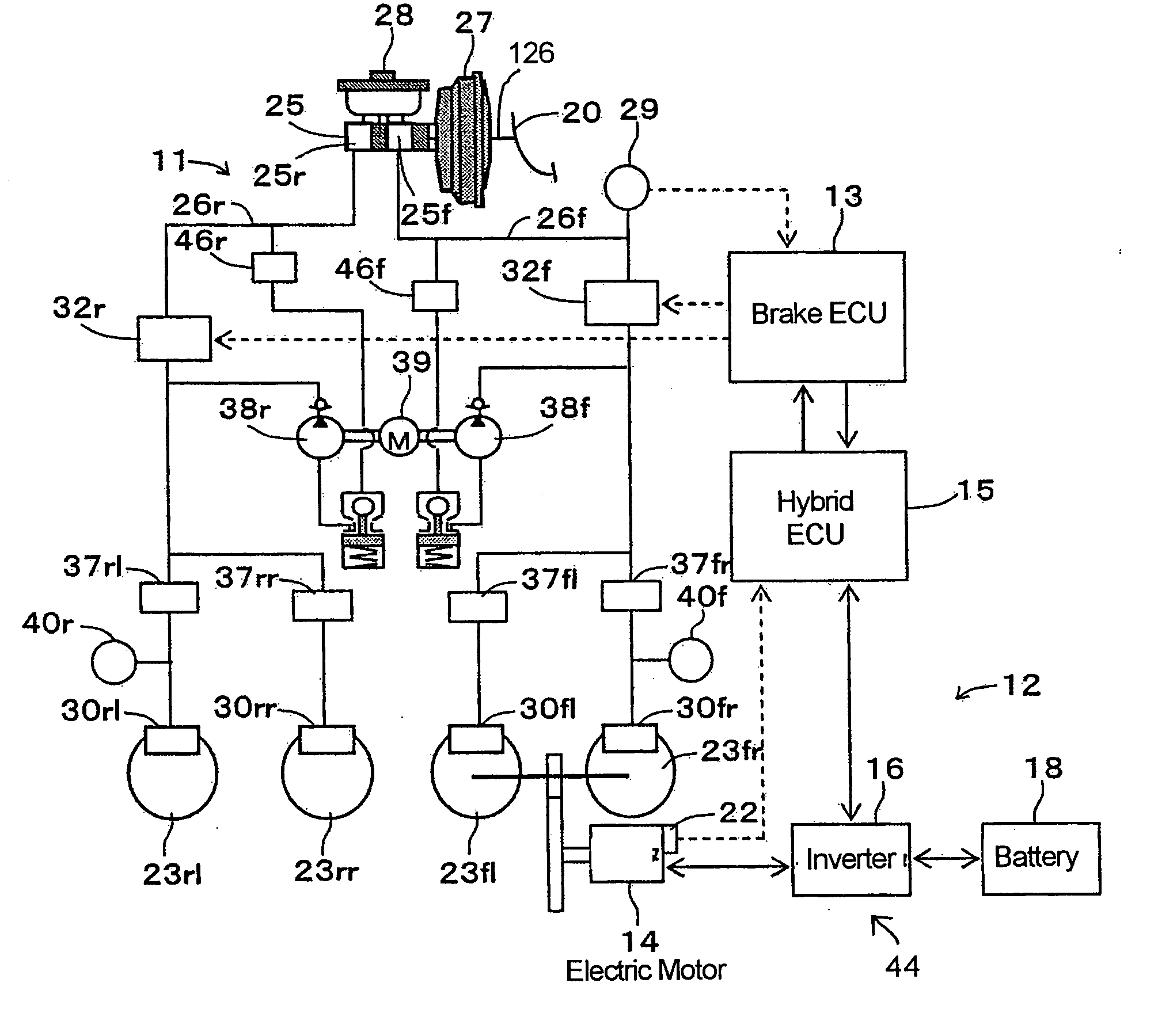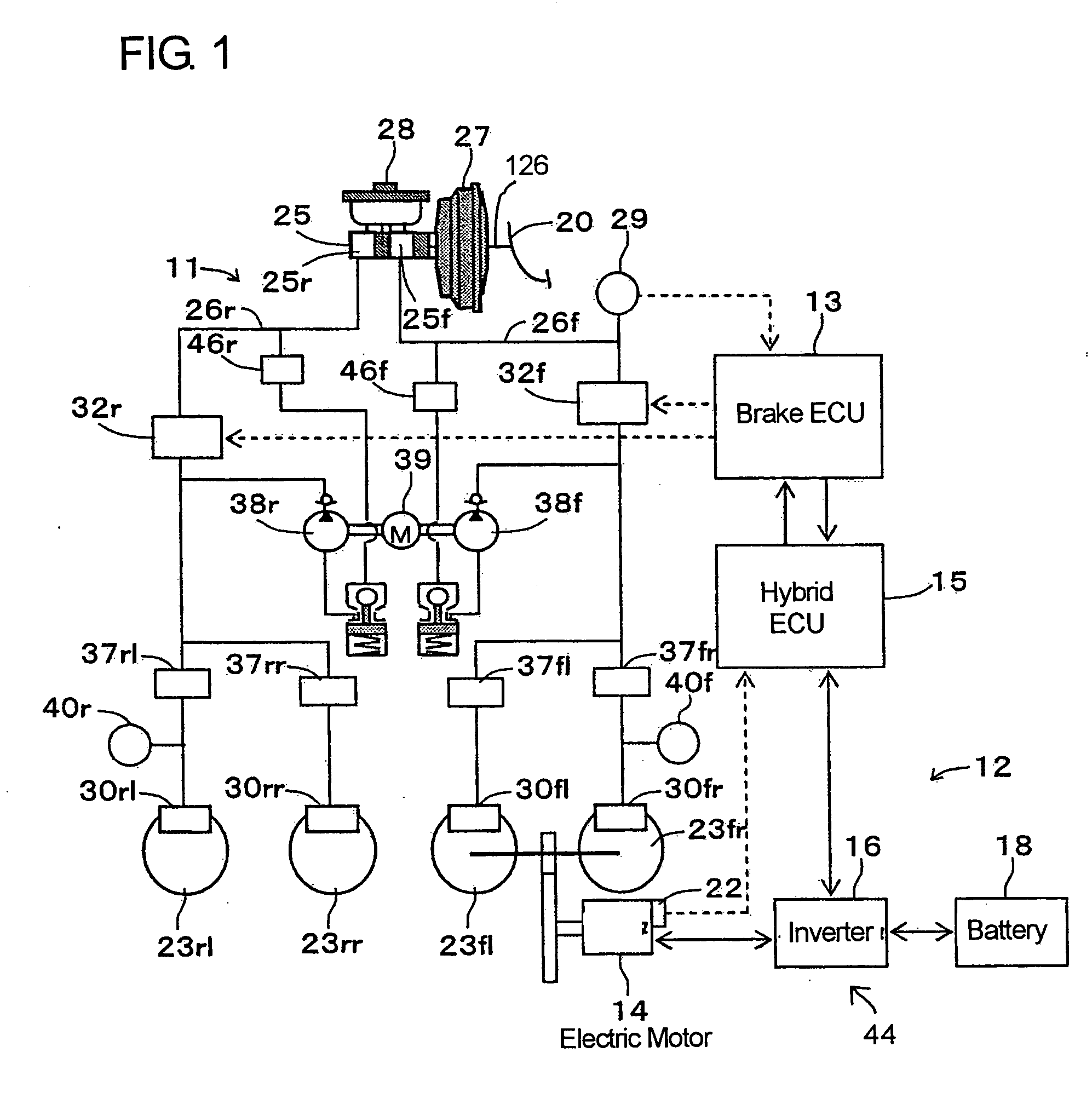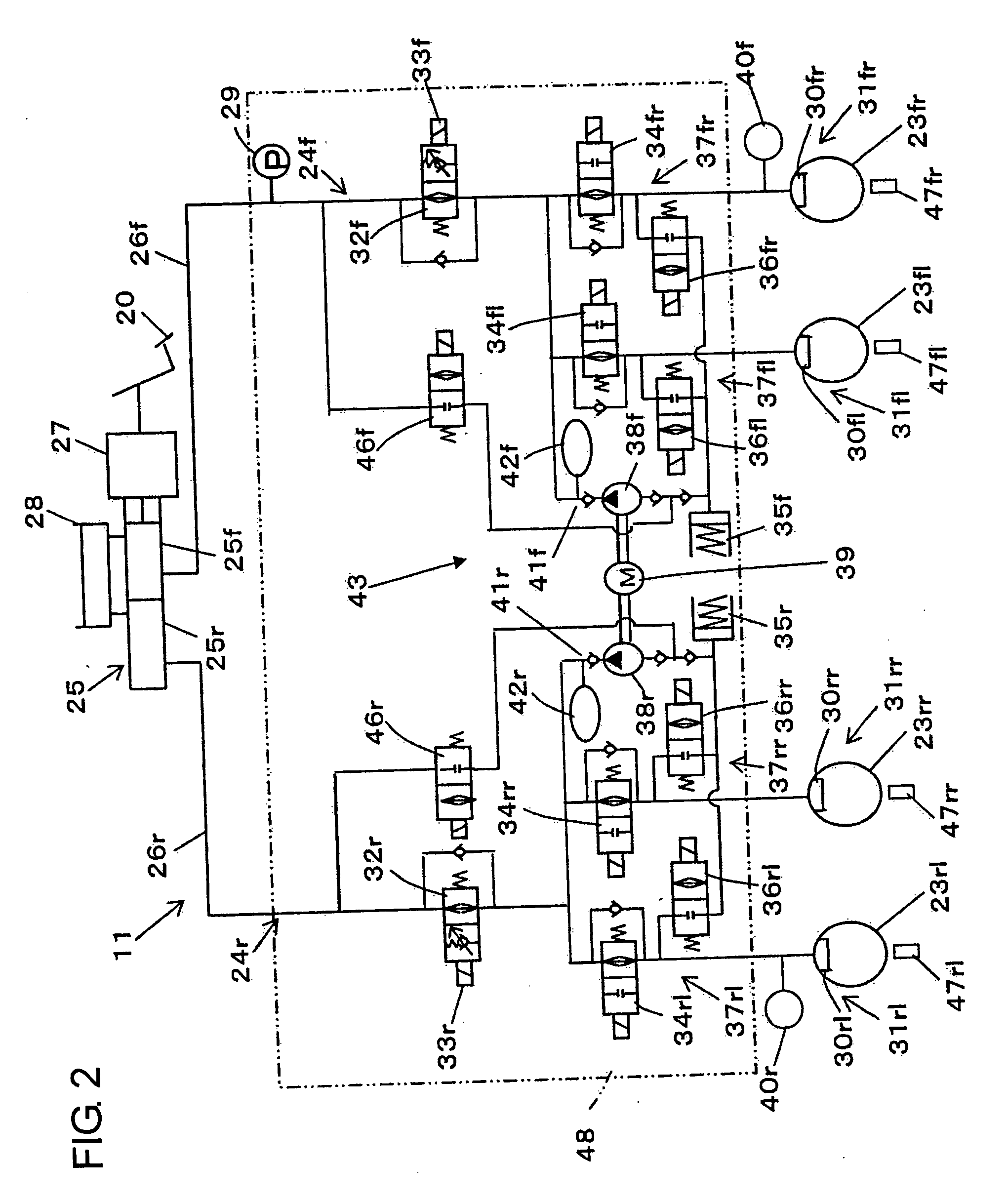Vehicle brake device
a brake device and vehicle technology, applied in the direction of electric devices, brake components, braking systems, etc., can solve the problems of large size and weight of the vehicle hydraulic brake device itself, complicated construction and cost increase, and limited space for regenerative brake force, etc., to achieve small dimension and light weight
- Summary
- Abstract
- Description
- Claims
- Application Information
AI Technical Summary
Benefits of technology
Problems solved by technology
Method used
Image
Examples
first embodiment
[0048] A vehicle brake device in a first embodiment according to the present invention will be described hereinafter with reference to the accompanying drawings. As shown in FIG. 1, the vehicle brake device is constructed to be applied to a front-drive motor driven car and is provided with a hydraulic brake device 11, a regenerative brake device 12, a brake ECU 13 for cooperatively controlling these devices 11 and 12, and a hybrid ECU 15 for controlling an electric motor 14 which is the drive power source for the motor driven car, through an inverter 16 in dependence on a demand value from the brake ECU 13.
[0049] The hydraulic brake device 11 is capable of applying a base hydraulic brake force to each of the wheels 23 by causing a vacuum booster 27 as a booster device to increase the braking manipulation force which is generated by the braking manipulation or the stepping manipulation on a brake pedal 20 and by applying a base fluid pressure depending on the increased braking manip...
second embodiment
[0096] A second embodiment shown in FIG. 10 differs from the first embodiment in that the control start for the pump drive is made at the same timing as the start of the braking manipulation. The hydraulic circuit arrangement of the hydraulic brake device 11 shown in FIG. 2 is similarly applicable to the second embodiment, and therefore, a flow chart used in the second embodiment will be described with reference to FIG. 2.
[0097] Referring now to FIG. 10, the brake ECU 13 executes a program corresponding to the flow chart at a predetermined minute time interval when an ignition switch (not shown) of the vehicle is in ON state. The brake ECU 13 takes thereinto the master cylinder pressure representing the manipulating state of the brake pedal 20, from the fluid pressure sensor 29 (step S202). Then, at step 204, it is judged whether or not the braking manipulation is being performed, and if the judgment at step 204 is YES, it is further judged at step 206 whether or not the vehicle ha...
third embodiment
[0120] A vehicle brake device in a third embodiment according to the present invention is designed for hybrid vehicles and uses the same system circuit diagram as shown in FIGS. 1 and 2 used in the foregoing first embodiment. Therefore, the third embodiment will be described hereinafter with reference to FIGS. 1 and 2 in addition to FIGS. 11 to 14, wherein description will be directed to the respects different from the foregoing first embodiment for the sake of brevity.
[0121] Referring now to FIGS. 1 and 2, a rotational shaft of the electric motor 14 is always in driving connection with the front left and right wheels 23fl, 23fr through a reduction gear train. The inverter 16 converts the direct current power of the battery 18 to an alternate current power in dependence on control signals supplied from the hybrid ECU 15 to supply the converted alternate current power to the electric motor 14 and also converts the alternate current power generated by the electric motor 14 converts i...
PUM
 Login to View More
Login to View More Abstract
Description
Claims
Application Information
 Login to View More
Login to View More - R&D
- Intellectual Property
- Life Sciences
- Materials
- Tech Scout
- Unparalleled Data Quality
- Higher Quality Content
- 60% Fewer Hallucinations
Browse by: Latest US Patents, China's latest patents, Technical Efficacy Thesaurus, Application Domain, Technology Topic, Popular Technical Reports.
© 2025 PatSnap. All rights reserved.Legal|Privacy policy|Modern Slavery Act Transparency Statement|Sitemap|About US| Contact US: help@patsnap.com



